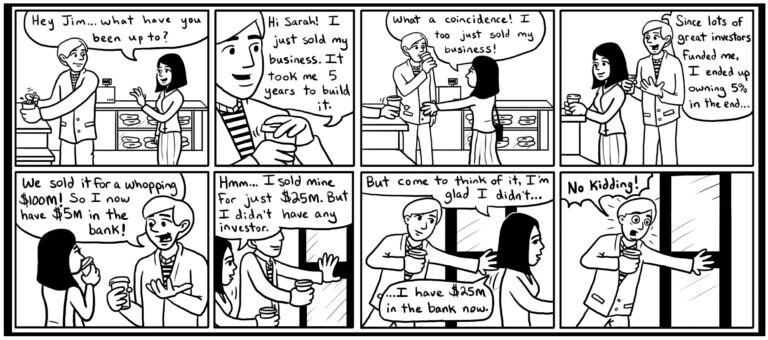Best of Bootstrapping: Solo Founder Bootstrapped to $7M in India

If you haven’t already, please study our Bootstrapping Course and Investor Introductions page.
Paras Chopra is Founder and Chairman of Wingify, a company that builds web analytics and optimization technology to include its flagship product Visual Website Optimizer. Here is our conversation from 2013.
Sramana: Paras, let’s start with the very beginning of your story. Where were you born and what are your family circumstances? What leads up to the Wingify story?
Paras Chopra: I was born in Punjab. I have been very lucky to have very forward-looking parents. I was introduced to computers very early on. I got access to a computer in my eighth standard year of school. My father had been playing with computers for a long time. He has an agriculture and biochemistry background, but he needed to use computers to conduct his work. He had a computer back when a 200Mhz computer was best in class!
Featured Videos
Thursday, March 2 – 601st 1Mby1M Mentoring Roundtable for Entrepreneurs

Entrepreneurs are invited to the 601st FREE online 1Mby1M Mentoring Roundtable on Thursday, March 2, 2023, at 8 a.m. PST/11 a.m. EST/5 p.m. CET/9:30 p.m. India IST.
If you are a serious entrepreneur, register to “pitch” and sell your business idea. You’ll receive straightforward feedback, advice on next steps, and answers to any of your questions. Others can register to “attend” to watch, learn, and interact through the online chat.
You can learn more here and REGISTER TO PITCH OR ATTEND HERE. Register and you will receive the recording by email, even if you are unable to attend. Please share with any entrepreneurs in your circle who may be interested. All are welcome!
Cloud Stocks: Shopify Eyeing Enterprise Business with Commerce Components

Ontario-based Shopify (NYSE:SHOP) recently reported its fourth quarter results that continued to outpace market expectations. The company continues to expand its market reach and is now targeting enterprise retailers for its next round of growth.
>>>Video FAQs
Can 1M/1M Help Me Raise Money?
How Does 1M/1M Democratize Entrepreneurship Education?
How Does 1M/1M Democratize Management Consulting?
When Is The Right Time To Join 1M/1M?
Can 1M/1M Help Me With Business Development?
Can 1M/1M Help Me With Market Sizing?
Can 1M/1M Help Me Validate My Product?
Will I Have Private 1-on-1 Sessions In 1M/1M?
How Does 1M/1M Help Entrepreneurs Connect With Silicon Valley?
Mentoring or Consulting?
Why Does 1M/1M Charge $1000 a Year?
Why Does 1M/1M Partner With Local Organizations?
Why Don\’t Mentoring Networks Work?
Why Is It Important To Study With 1M/1M Now?
Dan Stewart Story
Vikrant Mathur Story
Rapid Growth and $58 Million in Financing with a Virtual Company: Storyblok CEO Dominik Angerer (Part 2)
Sramana Mitra: Let’s unpack some things. When you put out this product, you put it out on a website and people started coming. What was one that website that drew people into it?
Dominik Angerer: We have used an approach that is now a big theme – product-led growth. We wrote articles on long-tail keywords that we wanted to rank on. For us, it was headless CMS. Headless CMS was bombarded with advertisements. The first page was unreachable for us. We looked into what other people are searching for.
>>>Best of Bootstrapping: Bootstrapping Journey of a Child Entrepreneur in India

If you haven’t already, please study our Bootstrapping Course and Investor Introductions page.
Varun Shoor is the Founder of Kayako, a company offering advanced helpdesk management software. When we spoke in 2014, Varun was steering the overall direction of the company as customer experience fanatic and lead product architect, taking an active role in the design and development of Kayako. One of Varun’s greatest passions is design. Applying modern, consumer-like design to stuffy business helpdesk software was Varun’s brainchild, and with it he founded Kayako in 2001. ESW Capital acquired Kayako in 2018.
Sramana: Varun, let’s start with your personal story. Where are you from? What is the backstory to Kayako?
Varun Shoor: I was born in Jalandhar, a city in Punjab. I have had no formal education. I started Kayako when I was 17. My family background is industrial by nature. My father is into manufacturing, primary tools such as hammers.
Rapid Growth and $58 Million in Financing with a Virtual Company: Storyblok CEO Dominik Angerer (Part 1)

Dominik has built a 230-people virtual company and raised $58 million in Financing. But first, he and his Brazilian co-founder bootstrapped to $1M ARR before raising a penny! Clever SEO strategy was at the heart of the first success. Read on for more!
Sramana Mitra: Let’s start by introducing our audience to you as well as to Storyblok.
>>>Catching Up On Readings: State of Generative AI Funding
This report from CB Insights breaks down the generative AI landscape across funding trends, top-valued startups, and most active VCs. For this week’s posts, click on the paragraph links.
>>>Colors: Tulip Fields, Aerial IV

I’m publishing this series on LinkedIn called Colors to explore a topic that I care deeply about: the Renaissance Mind. I am just as passionate about entrepreneurship, technology, and business, as I am about art and culture. In this series, I will typically publish a piece of art – one of my paintings – and I request you to spend a minute or two deeply meditating on it. I urge you to watch your feelings, thoughts, reactions to the piece, and write what comes to you, what thoughts it triggers, in the dialog area. Let us see what stimulation this interaction yields. For today – Tulip Fields, Aerial IV
Tulip Fields, Aerial IV | Sramana Mitra, 2021 | Watercolor, Pastel, Brush Pen | 8 x 8, On Paper
